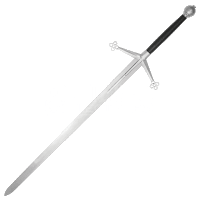 Ah, the Claymore: the zenith of metal work in a fantasy writer’s cache of weaponry. All is lost until the fateful moment the hero grips the hilt of the mighty weapon. Why? Because it’s a Claymore dang it! That’s why!
Ah, the Claymore: the zenith of metal work in a fantasy writer’s cache of weaponry. All is lost until the fateful moment the hero grips the hilt of the mighty weapon. Why? Because it’s a Claymore dang it! That’s why!
The truth is, the Claymore is in fact a wonderful weapon. It does well what it was designed to do as all weapons should. But, what is also true is that it is horrible at tasks it was never meant to carry out. Every weapon has advantages, the good, as well as disadvantages, the bad.
The History and Basics
The Claymore’s name derives from the Gaelic words “claidheamh mor,” which mean, “great sword,” in reference to size not its value as a weapon. It is said that the Scottish hero William Wallace carried a Claymore. But, the sword he used, which is still in existence, differs from we know as a Claymore in its point and ricasso.
Historically a Claymore was about 47 – 55 inches (120 – 140 cm). The weight was around five or six pounds (2.2 – 2.8kg). Yes, really. Claymores weren’t ten pounds swords. Ten pound swords weren’t a “thing.”
The Claymore was a two-handed sword. It had great reach and because of the weight behind its overall mass could create a great amount of force.
The ricasso, an unsharpened portion of the blade where it meets the handle, was often, not always, wrapped in leather. This allowed the wielder to “choke up” on the weapon to not only better guide the tip, but recover after a swing.
Because the Claymore was a double edged blade, one edge could be keen for slicing while the other could be dull for bashing through shields without getting stuck in them. The forward facing trefoils protected the wielder from coming blades and could trap the blades as well. The large pommel could be used as a melee weapon and considering the weight behind it, likely delivered a heck of a blow.
Just as important as any of its functions, the Claymore had great intimidation factor. The effects of that can’t be underestimated. As General Sun Tzu said in The Art of War, it’s best to break an enemy before the battle. Seeing a massive claymore coming might be enough to make a warrior rethink the fight.
The Bad
Even with a wrapped ricasso, and skilled hands, the Claymore could be a challenge to wield. It’s just plain old physics. Objects want to keep traveling in a straight path. The greater the mass of a thing, the harder it is to disrupt its progress. The harder the swing of the claymore, the more difficult it was to stop.
If you missed the opponent, the swing could bring your arms away from your body leaving it completely open to attack. For that same reason, it was not a great weapon for infighting. Defensively, one would want to dodge the swing of a Claymore, step in and strike because the wielder had next to no defense. Because of the Claymore’s size, it wasn’t possible to also carry a shield. So, you really needed to hit your target or you’d be in a pickle
The weight of the sword also created an issue for endurance. Five pounds may not seem like much, but it gets very heavy. You can’t compare it to holding a five pound weight in the hand as the weight of a sword extends away from the body. But, even if it were concentrated in the hand like a weight, try swinging that for more than five minutes!
Another disadvantage of the Claymore was that it couldn’t be used well in coordination with other warriors. For example, it would be difficult to fight in a group of three for the simple fact the Claymore was big and more difficult to control. You could lop your fellow soldier’s arm off! And yes, the Claymore could lop off an arm.
Finally because of its size, the Claymore had to be carried on the back or on one’s horse which made it not so easy to draw.
So, ya gotta ask yourself what it is you want to accomplish. Do you want intimidation, heft and force or the ability to carry a shield and greater dexterity?
Is the Claymore a great sword? Yes. That’s literally the words from whence its name is derived. Is it the be all end all? No. No sword is nor was meant to be.
Here’s the Forged in Fire episode all about the Claymore.
Enjoy.
Until the next time at FightWrite.net, get blood on your pages!




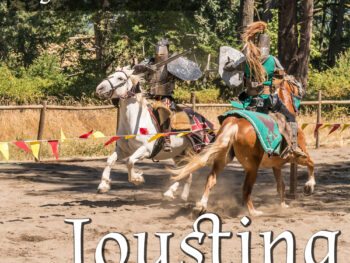

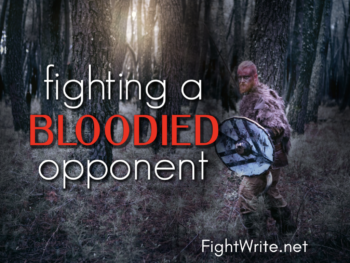
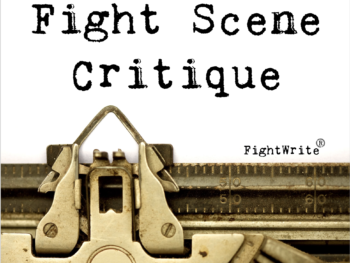
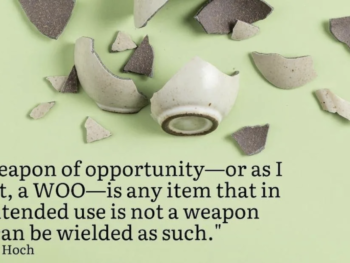

Great article thanks a lot for sharing.
Thank you! I’m sorry it took so long for me to reply. I have heaps of spam. I like your site. Maybe we can collaborate some time! 🙂
You really make it seem so easy with your presentation but I find this matter to be actually something which I think I would never understand. It seems too complicated and extremely broad for me. I am looking forward for your next post, I’ll try to get the hang of it!
Good website! I really love how it is easy on my eyes and the data are well written. I am wondering how I could be notified whenever a new post has been made. I have subscribed to your RSS feed which must do the trick! Have a nice day!
Great post. I used to be checking continuously this blog and I’m inspired! Extremely helpful information specially the final part 🙂 I maintain such info much. I was seeking this particular info for a long time. Thanks and good luck.
Hello. Great job. I did not expect this. This is a fantastic story. Thanks!
Hello my loved one! I want to say that this article is awesome, great written and come with approximately all vital infos. I would like to see more posts like this .
Thank you for the auspicious writeup. It in fact was a amusement account it. Look advanced to more added agreeable from you! By the way, how can we communicate?
Having read this I thought it was very informative. I appreciate you taking the time and effort to put this article together. I once again find myself spending way to much time both reading and commenting. But so what, it was still worth it!
I discovered your blog site on google and check a few of your early posts. Continue to keep up the very good operate. I just additional up your RSS feed to my MSN News Reader. Seeking forward to reading more from you later on!…
Thanks, I have recently been searching for information about this topic for ages and yours is the best I have discovered till now. However, what in regards to the bottom line? Are you positive in regards to the source?
My partner and I absolutely love your blog and find many of your post’s to be what precisely I’m looking for. Does one offer guest writers to write content available for you? I wouldn’t mind writing a post or elaborating on a number of the subjects you write regarding here. Again, awesome web log!
I would like to thnkx for the efforts you have put in writing this blog. I am hoping the same high-grade blog post from you in the upcoming as well. In fact your creative writing abilities has inspired me to get my own blog now. Really the blogging is spreading its wings quickly. Your write up is a good example of it.
Thanks a lot for sharing this with all of us you actually know what you’re talking about! Bookmarked. Please also visit my web site =). We could have a link exchange contract between us!
Greetings! Very helpful advice on this article! It is the little changes that make the biggest changes. Thanks a lot for sharing!
I conceive this site contains some rattling good info for everyone : D.
The other day, while I was at work, my sister stole my iphone and tested to see if it can survive a 30 foot drop, just so she can be a youtube sensation. My iPad is now broken and she has 83 views. I know this is completely off topic but I had to share it with someone!
I have not checked in here for a while because I thought it was getting boring, but the last few posts are good quality so I guess I?¦ll add you back to my everyday bloglist. You deserve it my friend 🙂
I’ve been surfing online more than three hours today, yet I never found any interesting article like yours. It’s pretty worth enough for me. Personally, if all website owners and bloggers made good content as you did, the net will be much more useful than ever before.
You have mentioned very interesting details! ps nice internet site.
Would love to perpetually get updated outstanding blog! .
Hello would you mind letting me know which webhost you’re working with? I’ve loaded your blog in 3 different internet browsers and I must say this blog loads a lot faster then most. Can you suggest a good hosting provider at a fair price? Thanks a lot, I appreciate it!
My programmer is trying to convince me to move to .net from PHP. I have always disliked the idea because of the costs. But he’s tryiong none the less. I’ve been using WordPress on numerous websites for about a year and am anxious about switching to another platform. I have heard good things about blogengine.net. Is there a way I can transfer all my wordpress posts into it? Any kind of help would be greatly appreciated!
I have been absent for a while, but now I remember why I used to love this blog. Thank you, I will try and check back more frequently. How frequently you update your website?
Wonderful blog! I found it while surfing around on Yahoo News. Do you have any suggestions on how to get listed in Yahoo News? I’ve been trying for a while but I never seem to get there! Thank you
This really answered my problem, thanks!
Heya! I just wanted to ask if you ever have any problems with hackers? My last blog (wordpress) was hacked and I ended up losing several weeks of hard work due to no data backup. Do you have any solutions to stop hackers?